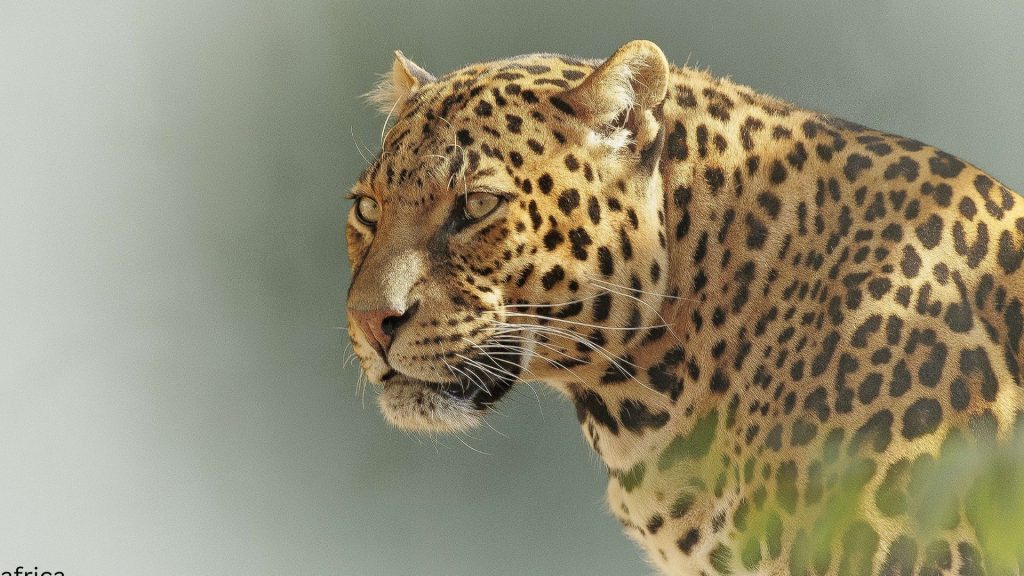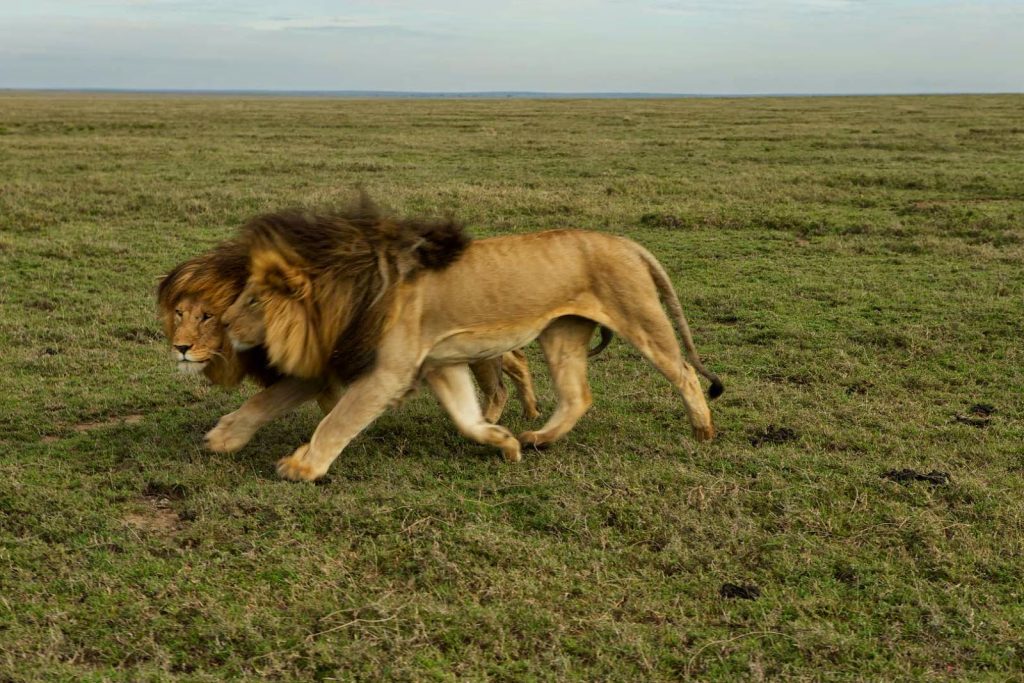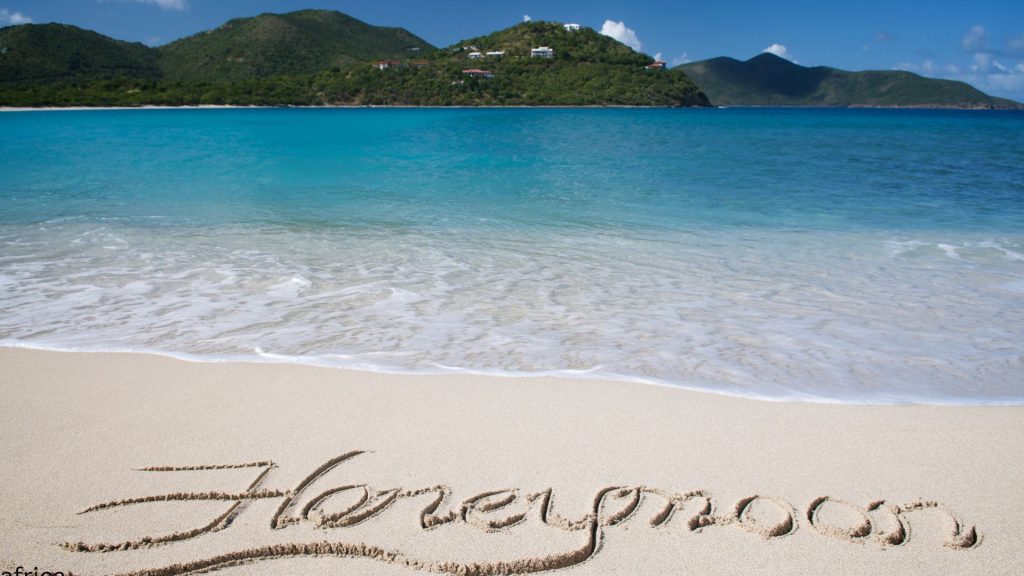Tanzania Safari In January
Let us first look at the pros and cons of Tanzania Safari In January, and then we will address aspects like climate and accommodations, and look at each park in the Northern Circuit and Zanzibar in detail:
Pros of Tanzania Safari In January:
- Start of Green Season: January marks the initiation of the Green season in Tanzania, characterized by relatively lighter showers compared to the wet seasons, resulting in lush green landscapes.
- Moderate Crowds: January doesn’t align with peak tourist seasons, leading to moderate crowds for most of the month, offering a chance to enjoy safari experiences without overcrowding.
- Wildlife Viewing: The Wildebeest Migration arrives in Southern Serengeti and Ndutu during January, providing excellent opportunities for wildlife sightings, including herbivores and big cats like cheetahs and lions.
- Diverse Landscapes: From the grassy plains of Serengeti to the lush greenery of Ngorongoro and the diverse ecosystems of Lake Manyara, January offers a chance to explore varied landscapes teeming with wildlife.
- Island Escapes: Zanzibar, Pemba, and Mafia Islands provide serene tropical experiences in January, with warm climates, clear waters for diving and snorkeling, and potential discounts on accommodations towards late January.
Cons of Tanzania Safari In January:
- Humidity: There is some humidity during January, particularly in coastal areas like Zanzibar, which could be uncomfortable for those unused to it.
- Early Crowds: At the beginning of January, crowds usually increase due to New Year celebrations, impacting accommodation prices.
- Variable Weather: While January is generally drier, occasional showers and thunderstorms may occur.
- Environmental Changes: Recent environmental changes have disrupted some ecosystems, affecting the habitat of certain birds and animals in parks like Lake Manyara. This could potentially impact wildlife sightings in specific areas.
Now let us see what Tanzania looks like in January in detail.
Climate and Landscape
Tanzania experiences two wet seasons, with short rains occurring from October to early December and long rains from March to May. Positioned between these wet seasons, January initiates the Green season in Tanzania. While some showers may occur, they are lighter than the downpours characteristic of the Wet Season, resulting in a relatively drier period. During this month, temperatures range from a high of 28°C / 83°F to a low of 15°C / 60°F.
Accommodations and Crowds
January doesn’t align with the low or high season, reducing the likelihood of accommodation closures. Consequently, crowds are generally moderate, with a slight increase at the beginning of the month due to New Year celebrations. As the month progresses, the number of visitors decreases, impacting costs. Accommodation prices may be higher at the start of January, gradually reducing towards the end of the month.
Serengeti
In January, the Wildebeest Migration arrives in Southern Serengeti and Ndutu, a part of the Ngorongoro Conservation Area. The great thing about the migration being present in Southern Serengeti and Ndutu is that this region remains relatively dry compared to other parks and areas. The elevated terrain of Ngorongoro acts as a barrier, obstructing clouds and limiting rainfall in the southern part of Serengeti. In addition to the migration, the region hosts various ungulates such as zebras, impalas, and gazelles. The substantial presence of herbivores attracts big cats like cheetahs and lions, often found lurking in ambush along the fringes.
Apart from the Southern Serengeti/Ndutu region, Serengeti in general, especially Central Serengeti, remains a great location throughout the year. Central Serengeti is famous for the Seronera Valley, teeming with big cats, earning it the name of the Big Cat Capital. Additionally, Central Serengeti is home to a diverse array of other animals like giraffes, zebras, wildebeests, warthogs, elephants, impalas, and more. Its landscape features the classic Serengeti grasslands studded with stunning kopjes, providing ample opportunities to witness wildlife in their natural habitat. Therefore, Central Serengeti is an excellent destination for wildlife enthusiasts in January and throughout the year.
To check out our popular migration itineraries, click here.
Ngorongoro
As a segment of the migration extends into Ngorongoro, the local wildlife experiences a population boost. Due to recent rains, the landscape boasts lush greenery without excessive wetness. Ngorongoro’s high concentration of animals ensures abundant wildlife sightings amidst the flourishing vegetation. Besides the wildlife, Ngorongoro serves as a haven for numerous migratory birds such as lapwings, harriers, bee-eaters, and more in January, creating an ideal setting for bird enthusiasts. Situated at a higher altitude, Ngorongoro exhibits varying temperatures, with January ranging around 23°C / 73 °F and potentially dropping as low as 10°C / 50°F, particularly on the crater rim.
To check out tours featuring Ngorongoro
Tarangire
In January, the wildebeest population in Tarangire diminishes, yet the landscape remains vibrant with other herbivores such as zebras, impalas, giraffes, and elephants still in abundance. Buffaloes tend to congregate near the Silale swamps, and the iconic baobabs maintain their towering and majestic presence. While the region takes on a green hue, the grass remains short, providing good visibility for observing the diverse wildlife.
To check out tours featuring Tarangire
Lake Manyara
Likewise, at Lake Manyara, the landscape transforms into a green and lush haven, hosting diverse wildlife including elephants, giraffes, and antelopes. The park’s various ecosystems, ranging from floodplains to rainforests, also attract numerous migratory birds.
It must be noted that recent environmental changes have disrupted the park’s ecosystem, prompting several birds and animals to find a home in other regions. For further insights into Lake Manyara, detailed information is available on our dedicated page here.
To check out tours featuring Lake Manyara
Island Escape:
Zanzibar
Much like the National Parks, Zanzibar welcomes a warm climate in January, making it an ideal time to explore its pristine beaches. January stands out as one of the hottest months on the island. While occasional thunderstorms may occur, they tend to dissipate quickly. Windy conditions are likely on the northern and eastern ends, creating optimal conditions for sports like kitesurfing and parasailing, whereas the sheltered southern ends are relatively calmer. The island also becomes calmer towards late January as crowds reduce, and accommodations and services potentially offer discounts to tourists.
Pemba
Pemba Island in January provides a serene tropical experience, ideal for those looking for a quiet retreat. Dive into the clear waters surrounding Pemba for a mesmerizing underwater adventure and snorkel amidst vibrant coral colonies.
Mafia Island
Mafia Island also offers a calm tropical experience in January. Explore the island’s serenity and dive or snorkel in the pristine waters. Witness the beauty of vibrant coral colonies beneath the surface, creating a captivating underwater scene, and swim with the whale sharks.



